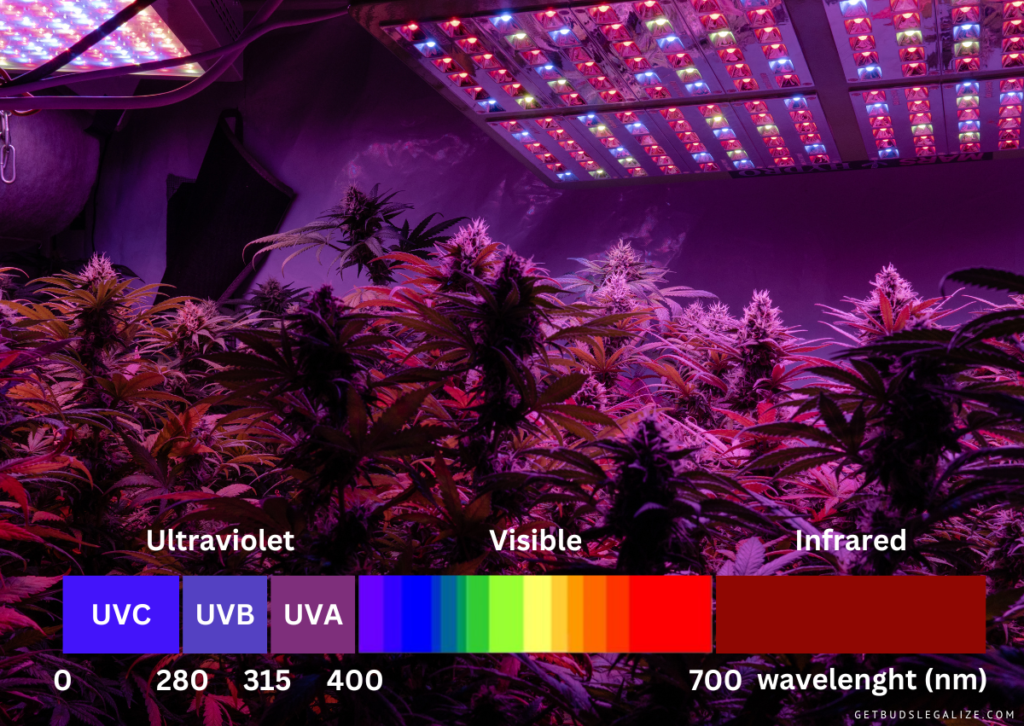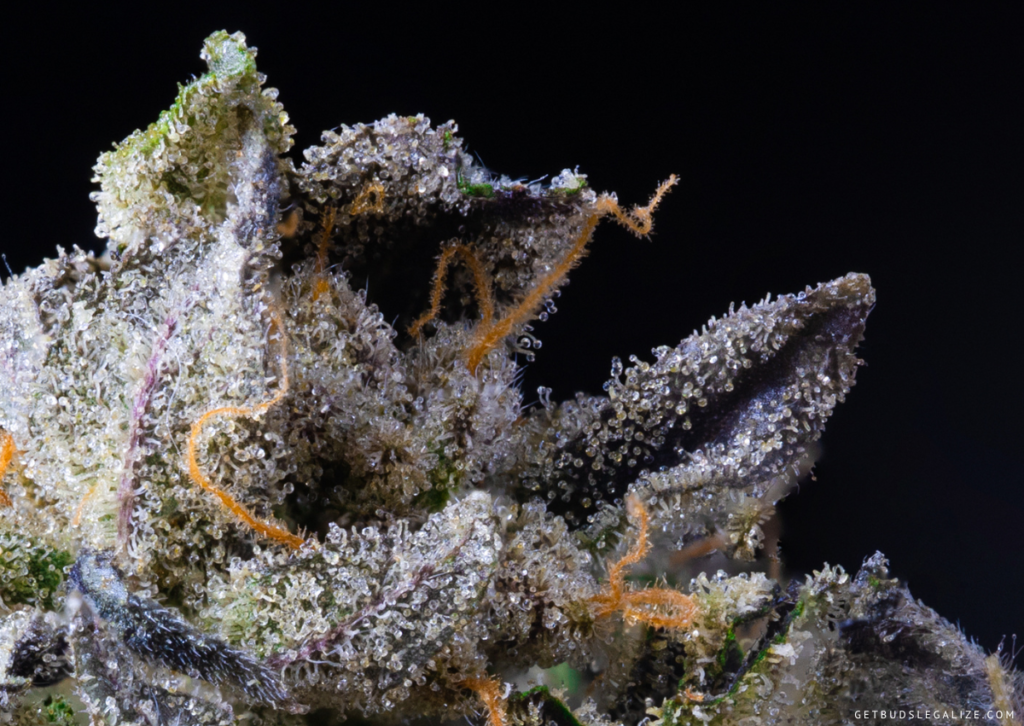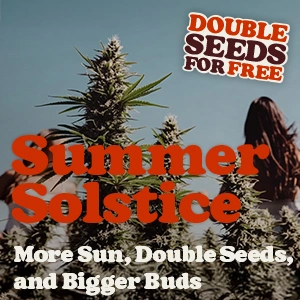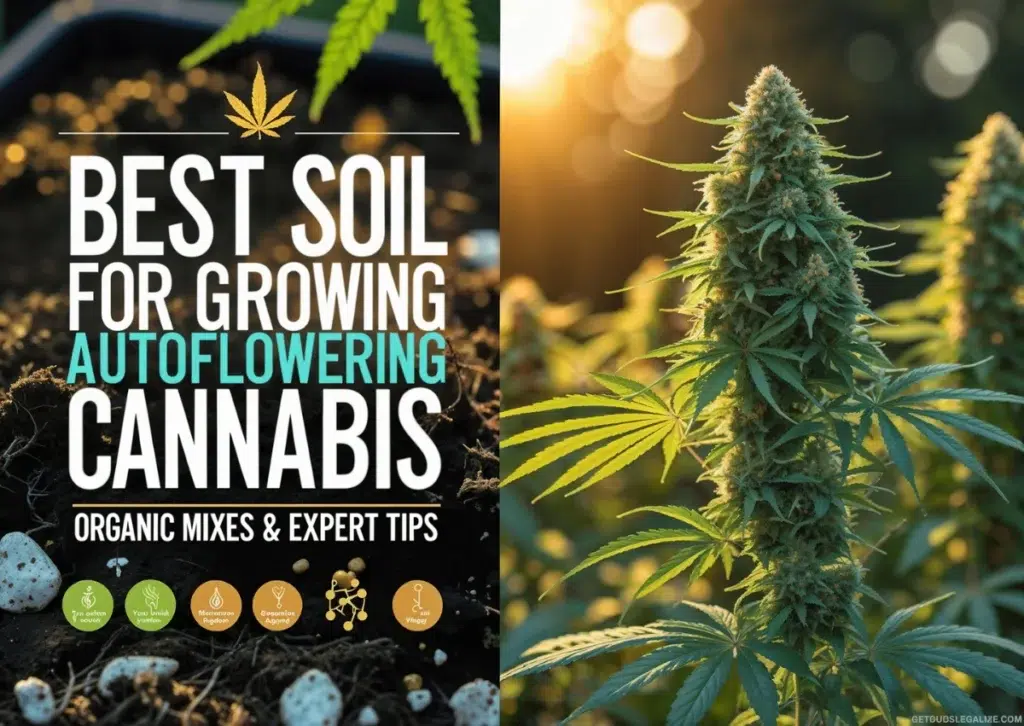How To Boost THC By Using UV Light on Marijuana Plants
If you are a cannabis producer or enthusiast, you might be wondering how to increase the potency and quality of your plants. One of the factors that can affect the production of secondary metabolites, such as THC, in your plants is light intensity and spectrum.
In this blog post, we will answer some of the frequently asked questions about using UV light on marijuana plants and how it can boost THC levels.
Does Marijuana Need UV Light?
Marijuana plants do not need ultraviolet light to survive and grow. In fact, too much UV light can be harmful to plants, as it can damage their DNA and cause mutations. However, some studies have shown that moderate UV exposure can stimulate the production of tetrahydrocannabinol (THC) and other cannabinoids in plants.
This is because ultraviolet light acts as a form of stress for plants, triggering a defensive response. The plants produce more cannabinoids, especially THC, to protect themselves from the harmful effects of UV radiation. Cannabinoids act as a natural sunscreen for plants, shielding them from further damage.
How Does UV Light Affect Marijuana Growth and Development?

Different types of UV light have different effects on plant growth and development. Here are some of the main effects of each type:
UVA Light:
UV-A light is the most abundant type of UV light on Earth. It has a wavelength range of 315-400 nm and accounts for about 95% of the ultraviolet radiation that reaches the surface of the planet. UV-A light can penetrate deep into the skin and cause premature aging and wrinkles. It can also penetrate glass and plastic, making it easy to reach indoor plants.
UV-A light has a mild effect on marijuana plants. It can slightly increase the production of THC and other cannabinoids, but not as much as UV-B light. UV-A light can also enhance the color, flavor, and aroma of the buds by stimulating the production of anthocyanins, terpenes, and flavonoids.
UVB Light:
UVB light is the most potent type of UV light for marijuana plants. It has a wavelength range of 280-315 nm and accounts for about 5% of the ultraviolet radiation that reaches the Earth’s surface. UV-B light can cause sunburns, skin cancer, and eye damage in humans and animals. It can also damage plant cells and DNA, causing mutations and stunted growth.
However, moderate exposure to UV-B light can significantly boost the THC levels of marijuana plants. Some studies have shown that UV-B light can increase THC production by up to 28%. This is because UV-B light induces a strong stress response in the plants, forcing them to produce more cannabinoids as a form of protection.
UVC Light:
UV-C light is the most dangerous type of UV light for living organisms. It has a wavelength range of 100-280 nm and is completely absorbed by the ozone layer before reaching the Earth’s surface. UV-C light can kill bacteria, viruses, and fungi by breaking down their DNA. It is used for sterilization purposes in hospitals and laboratories.
UV-C light is not recommended for cannabis cultivation, as it can severely harm or kill plants. UV-C light can destroy the chlorophyll and other pigments in the plant cells, reducing their ability to perform photosynthesis. It can also damage the plant’s DNA beyond repair, causing mutations and deformities.
What Are The Benefit and Drawbacks of Using UV Light on Marijuana Plants?

Using UV light on marijuana plants can have several benefits, such as:
- Increasing THC content: As mentioned above, exposing cannabis plants to moderate amounts of UV-B light can significantly boost their THC production, resulting in more potent buds.
- Enhancing flavor and aroma: UV light can also stimulate the production of terpenes and flavonoids in marijuana plants, which are responsible for their unique flavor and aroma profiles.
- Improving pest resistance: UV light can help prevent or reduce pest infestations by killing or repelling insects, mites, and fungi that may attack the plants.
- Mimicking natural conditions: Using UV light for indoor cannabis can help recreate the natural environment that cannabis evolved in, where it was exposed to varying levels of UV radiation throughout the day and seasons.
However, using UV light on marijuana plants also comes with some risks, such as:
- Damaging the plants: Too much UV light can harm the plants by causing cell damage, DNA mutations, chlorosis, necrosis, and stunted growth. It can also reduce the yield and quality of the buds by affecting the plant’s metabolism and photosynthesis.
- Harming yourself: UV light can be dangerous to anyone who comes in contact with it. UV light can cause skin burns, eye irritation, cataracts, and even skin cancer. Therefore, you should always wear protective gear such as sunglasses, gloves, and long sleeves when working with it.
How to Use UV Light to Boost THC Levels in Marijuana Plants?

If you want to use UV light to boost THC levels in your cannabis production, you need to consider several factors such as the type, intensity, duration, and timing of UV exposure. Here are some general guidelines to follow:
During The Seedling Stage:
In this stage, your plants are very delicate and sensitive to light stress. Therefore, you should avoid exposing them to any UV light, as it can damage their cells and stunt their growth. Instead, use a full spectrum LED grow light or fluorescent light that provides enough blue and red wavelengths for healthy development.
During The Vegetative Stage:
In this stage, your plants grow rapidly and need a lot of light to produce chlorophyll and biomass. You can start introducing some UV light to your plants, but only in small doses and for short periods of time.
For example, you can use a UVB bulb or a UVB supplement light for 15 minutes per day, preferably in the morning or evening when the sun is not too strong. This will help your plants develop stronger stems and branches, as well as increase their resistance to pests and diseases.
During The Flowering Stage:
In this stage, your plants are producing buds and need a lot of light to maximize their yield and quality. You can increase the amount and duration of UV light exposure to your plants, but still, be careful not to overdo it.
For example, you can use a UVA bulb or a UVA supplement light for 2 hours per day, preferably during the middle of the day when the sun is at its peak. This will help your plants produce more trichomes and cannabinoids, as well as enhance their flavor and aroma.
What Are The Best Types of UV Lights for Growing Cannabis?

The answer to this question depends on your growing setup and goals. If you are growing outdoors, you do not need dedicated UV lights for cannabis, as the plants will receive enough natural UV radiation from the sun. However, you should be aware of the seasonal and daily variations in UV levels, and adjust your watering and feeding accordingly.
If you are growing indoors, you may benefit from adding some UV lights to your grow room, especially if you are using fluorescent or LED grow lights that do not emit much UV radiation.
However, you should not rely solely on UV lights for cannabis, as they do not provide the full spectrum of light that the plants need for optimal growth. You should use UV lights as a supplement to your main lights and only during certain stages of the plant’s life cycle.
What Is The Optimal Distance to Keep Between UV Light and Plants?
The optimal distance depends on several factors, such as the type and intensity of the UV light source, the duration and frequency of exposure, the species and variety of the plant, and the environmental conditions.
Generally speaking, the closer the UV light is to the plant, the more intense the radiation and the greater the risk of harm. However, if the UV light is too far away, the plant may not receive enough stimulation to produce beneficial compounds.
A good way to determine the optimal distance is to monitor the plant’s response to different distances and adjust accordingly. Some signs of optimal UV exposure are increased leaf thickness, color, and aroma, as well as improved resistance to pests and diseases. Some signs of excessive UV exposure are leaf curling, wilting, yellowing, or browning, as well as reduced growth and flowering.
What Is The Optimal Intensity of The UV Light for Your Cultivation?

The optimal intensity of UV light depends on the type of cannabis strain you are growing, as some strains are more resistant to UV stress than others.
A general rule of thumb is to use a UV light source that has a rating of 10 to 15 watts per square foot of canopy area. You can measure the intensity of your UV light with a UV meter or a smartphone app.
What Are Some Safety Tips for Using UV Light on Your Cannabis Growth?
UV light can be harmful to both plants and humans, so it is important to take some safety precautions when using it on your cannabis plants. Here are some tips to follow:
- Wear protective eyewear and clothing when working with UV lights. UV radiation can cause eye damage, skin burns, or skin cancer.
- Keep a safe distance from the UV lights. UV radiation can decrease rapidly with distance, so avoid getting too close to the light source.
- Use a timer or a controller to regulate the UV light exposure. UV radiation can accumulate over time, so avoid overexposing your plants or yourself to the light.
- Ventilate your growing space well. UV radiation can generate ozone, which can irritate your respiratory system or damage your plants.
- Check your plants regularly for signs of damage or stress. UV radiation can cause various symptoms in your plants, such as leaf discoloration, wilting, or reduced yield. Adjust the UV light dose accordingly or stop using it if necessary.
Bottom Line
Remember that UV lighting is only one component of the light spectrum your plants need. You should also provide them with enough red, blue, and green light to ensure their optimal growth and development. Happy growing!
FAQs about Using UV Light on Marijuana Plants
UV or black light bulbs for cannabis are not safe for humans or animals, as they can cause eye and skin damage, as well as increase the risk of cancer. Therefore, you should always wear protective gear, such as goggles and gloves, when handling or using UV lights for cannabis. You should also keep your growing space well-ventilated and isolated from other living beings.
Using a UV light in combination with an IR light can have some benefits for growing marijuana, such as boosting secondary metabolite production and regulating the flowering cycle.
However, these types of light should be used carefully and sparingly, as they can also cause harm to the plant if used excessively or improperly. It is advisable to use infrared and UV in conjunction with other types of light, to create a balanced spectrum that meets the needs of cannabis plants at different stages of growth.
According to some studies, UVC is the most effective type of UV light for killing powdery mildew spores. UVC can destroy up to 99% of spores within seconds, depending on the intensity and duration of exposure.
However, UVC is also very dangerous for humans and plants, as it can cause severe burns, eye damage, mutations, and death. Therefore, should only be used with extreme caution and protection, and only when there are no humans or plants in the room.
There are different types of UV lights for indoor growth available on the market, each with its own pros and cons. Some of the most common ones are:
1. Fluorescent tubes: These are long and thin bulbs that emit low-intensity UV light. They are easy to install and cheap to buy, but they also have a low output and a short lifespan. They are best suited for small-scale growers who want to add some UV-A light to their grow room.
2. Compact fluorescent lamps (CFLs): These are spiral-shaped bulbs that emit moderate-intensity UV light. They are more efficient and durable than fluorescent tubes, but they also generate more heat and require more space. They are best suited for medium-scale growers who want to add some UV-A or UV-B light to their grow room.
3. Metal halide (MH) lamps: These are high-intensity discharge (HID) bulbs that emit high-intensity UV light. They are very powerful and effective, but they also consume a lot of electricity and produce a lot of heat. They require a ballast and a reflector to operate, which adds to their cost and complexity. They are best suited for large-scale growers who want to add some UV-A or UV-B light to their grow room.
4. Light-emitting diodes (LEDs): These are small and compact bulbs that emit low-intensity UV light. They are very energy-efficient and long-lasting, but they also have a high initial cost and a low output. They do not require a ballast or a reflector to operate, which makes them easy to use and versatile. They are best suited for small-scale growers who want to add some UV-A or UV-C light to their grow room.
The best color of light for growing marijuana depends on the stage of growth. For the vegetative phase, blue light is optimal, as it promotes leaf and stem growth.
For the flowering phase, red light is ideal, as it stimulates bud production and resin formation. White light, which contains a mix of colors, can also be used for both stages, but may not be as efficient as specific colors.
ILGM Fertilizer

- From seedling to harvest, give your plants everything they need.
- Enough for feeding at least 5 plants.
- Discounted Package Deal
- Works well in soil, hydroponics, and other growing mediums.
- The best way to treat your plants
ILGM Plant Protector

- Protect your cannabis from diseases and harmful pests.
- Contains three 20 ml bottles.
- Enough supplies to protect 20 plants.
- It can be used in soil, hydroponic, and all other growing mediums.

















